
Where We Be
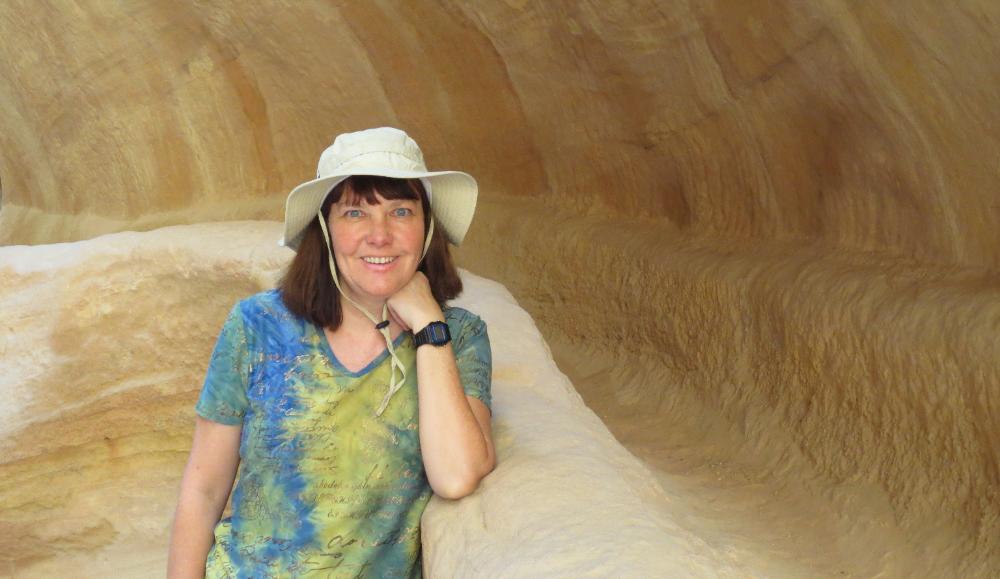
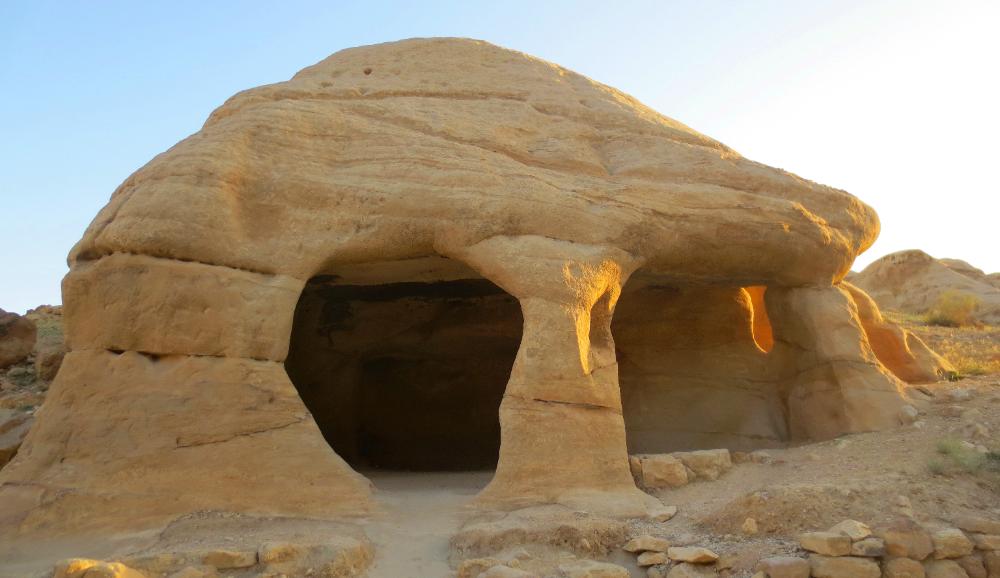
| One of the first man-made sights you come to are these carved Djinn Blocks, said to house djinn, or spirits |
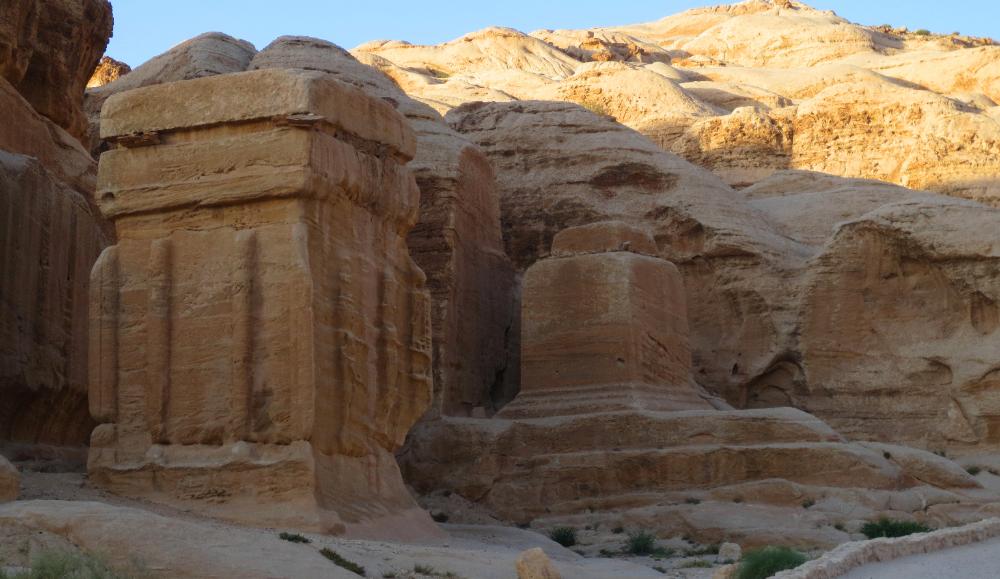

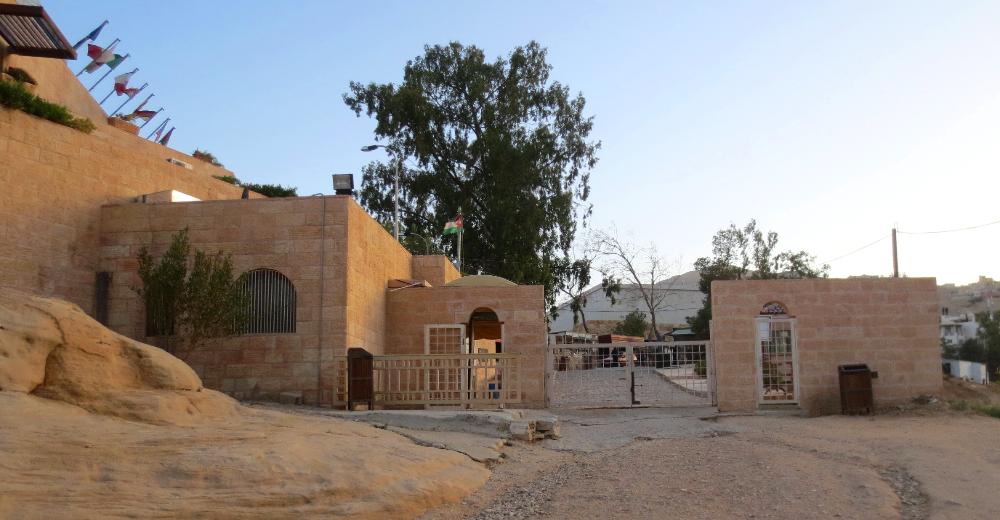
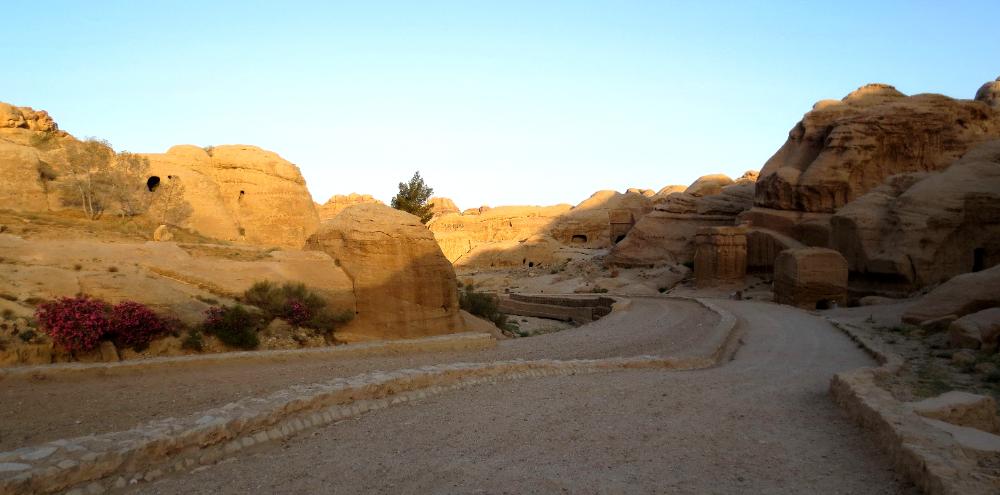
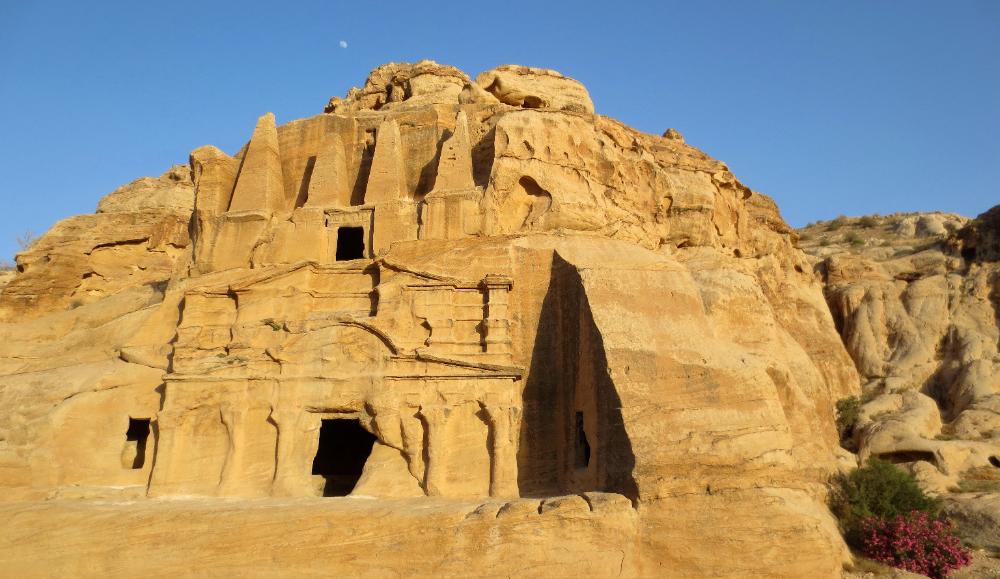
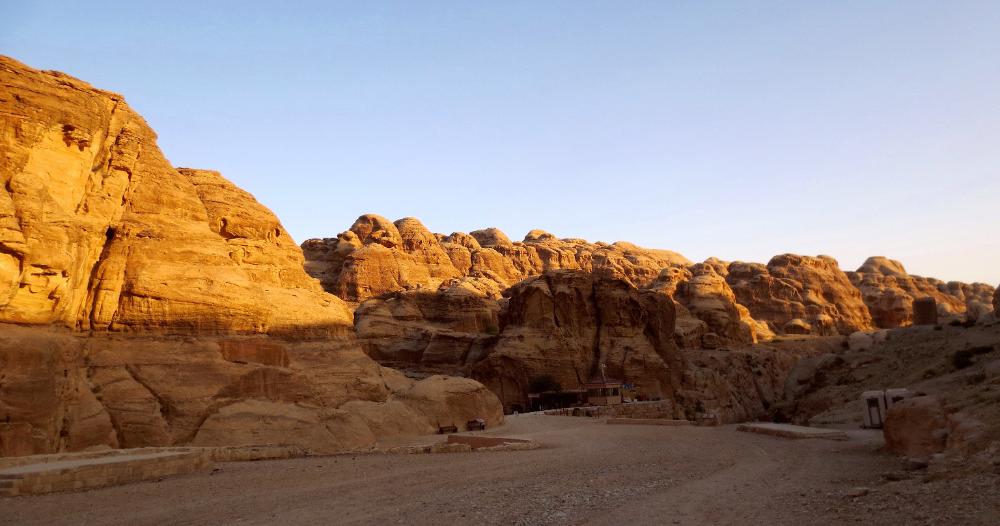
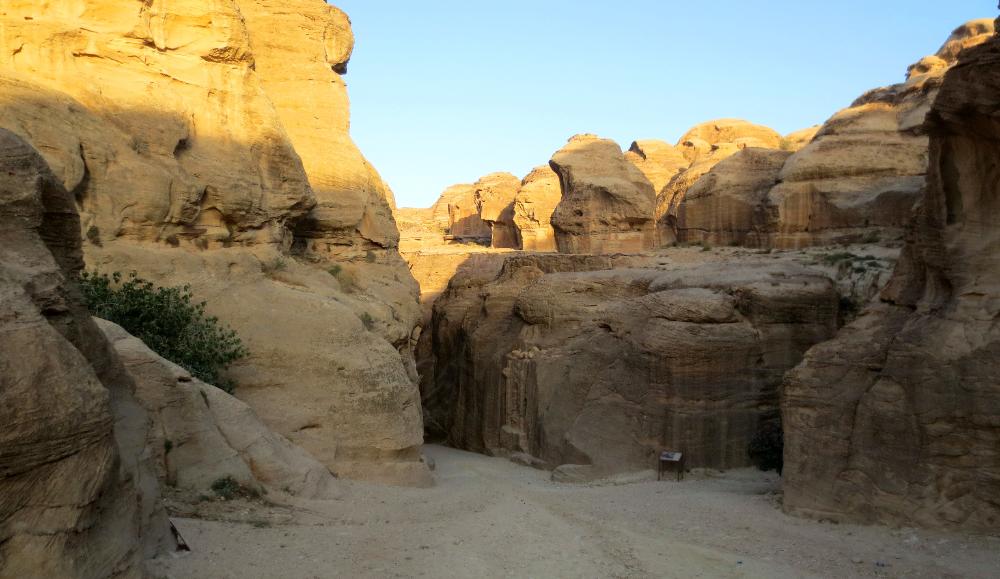
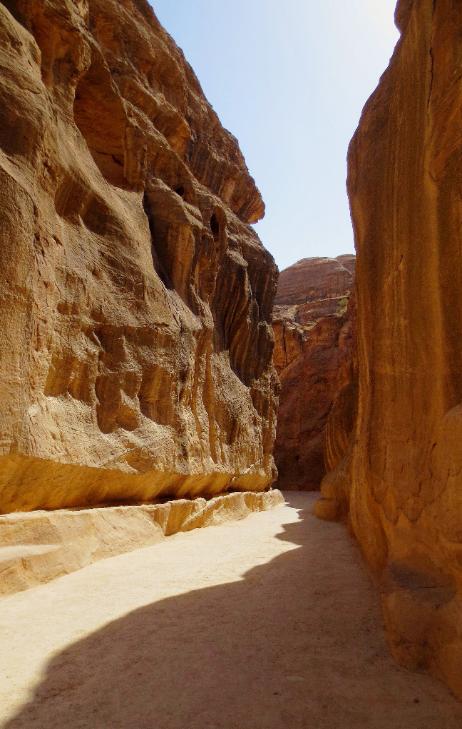
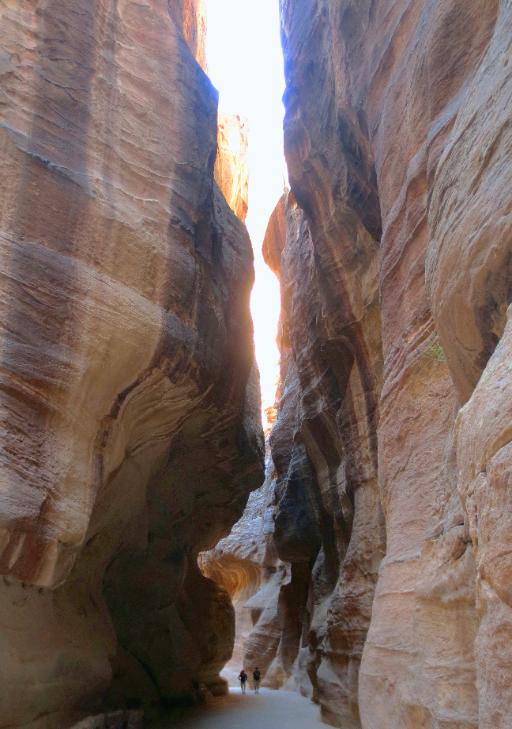
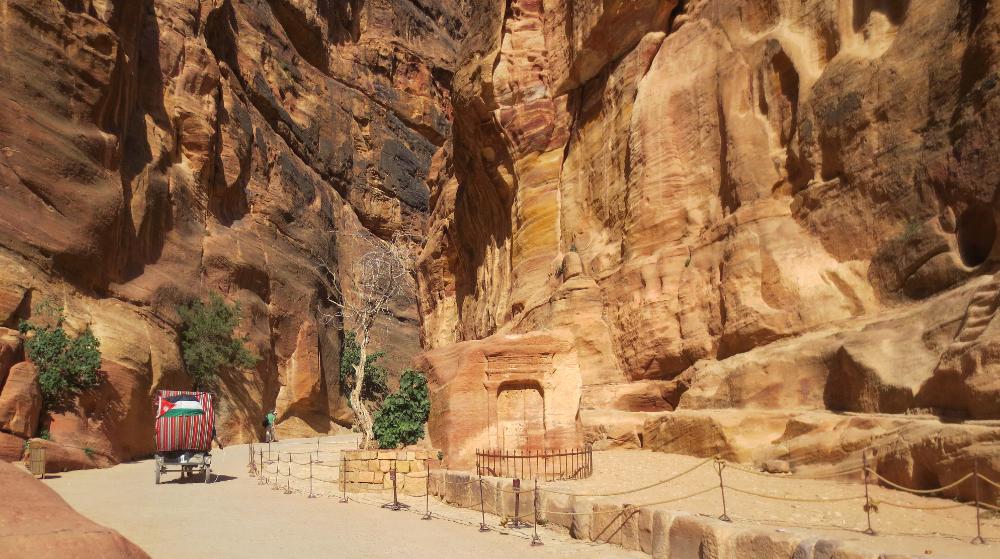
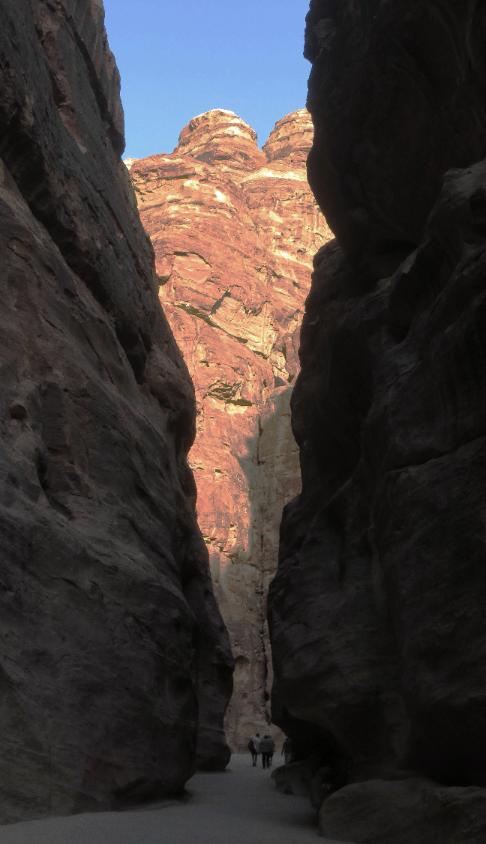

| Now let's take a walk together through the Siq. Here we're looking back at the entrance gate to ancient Petra. The Petra Moon Hotel is located just up a hill to the left -- one of only a few hotels within easy walking distance. |
| To get to the narrow part of the Siq, you first walk half a mile along a broad valley known as the Bab Al-Siq. The track to the left is for horses, donkeys, and camels; the track to the right is for walkers. As you can see, we have the place mostly to ourselves at this hour. |
| And this is the Obelisk Tomb and Triclinium bathed in the light of the late afternoon sun. What a lovely sight! |
| This odd cave structure looks like the top half of a skull |
| Now we're approaching the entrance to the Siq proper -- the narrower part of the gorge. Still another half-mile to go to the city of Petra itself. |
| From this point forward, the path narrows considerably and you find yourself winding through the tightening walls of the canyon |
| These men in traditional Arabian garb walk through the Siq near sunset. With fine scenery like this, the mile walk in and out of Petra is pure pleasure. |
| What a spectacular entrance to an ancient city! |
| The canyon widens briefly at this spot known as the Niche Monument. A horse-drawn carriage heads back up the canyon as we continue down. |
| Robin pauses for a moment at a water channel carved into the rock. Back in the day, Petra was a desert oasis filled with flowing water. |
| Walking through the Siq can be a magical experience, especially when you hear the distant clip-clop of horses or an echoing Arabic song sung by one of the horse handlers coming towards you |
| Petra, Jordan -- The Siq |
To get to the ancient city of Petra you must first
walk through a dramatic mile-long entrance
canyon called the Siq. We went without a guide
and just moseyed along at our own pace. You
really can't get lost since there's only one way
to go, and signs in good English offer historical
information at key points. The Siq starts out as a
wide valley peppered with man-made tombs,
then narrows into an impressive canyon with
high walls and colorful striations. What you see
at the end of the Siq is enough to stop you in
your tracks. (See the last photo on this page.)
Petra reached its heydey back in Biblical times
(3rd c. BC to 1st c. AD), when the Nabataeans
turned Petra from a desert watering hole to the
center of a vast trading empire. From here they
controlled vital trade routes through the desert
(think silk, gold, and spices). The city is large
enough you'll need at least two days to explore
it well. That will also let you do your exploring in
the early morning and late afternoon hours
when it's cooler and there are far less tourists.
This is our #1 tip for Petra: visit at either end of
the day and take a nice long nap in the middle.
walk through a dramatic mile-long entrance
canyon called the Siq. We went without a guide
and just moseyed along at our own pace. You
really can't get lost since there's only one way
to go, and signs in good English offer historical
information at key points. The Siq starts out as a
wide valley peppered with man-made tombs,
then narrows into an impressive canyon with
high walls and colorful striations. What you see
at the end of the Siq is enough to stop you in
your tracks. (See the last photo on this page.)
Petra reached its heydey back in Biblical times
(3rd c. BC to 1st c. AD), when the Nabataeans
turned Petra from a desert watering hole to the
center of a vast trading empire. From here they
controlled vital trade routes through the desert
(think silk, gold, and spices). The city is large
enough you'll need at least two days to explore
it well. That will also let you do your exploring in
the early morning and late afternoon hours
when it's cooler and there are far less tourists.
This is our #1 tip for Petra: visit at either end of
the day and take a nice long nap in the middle.
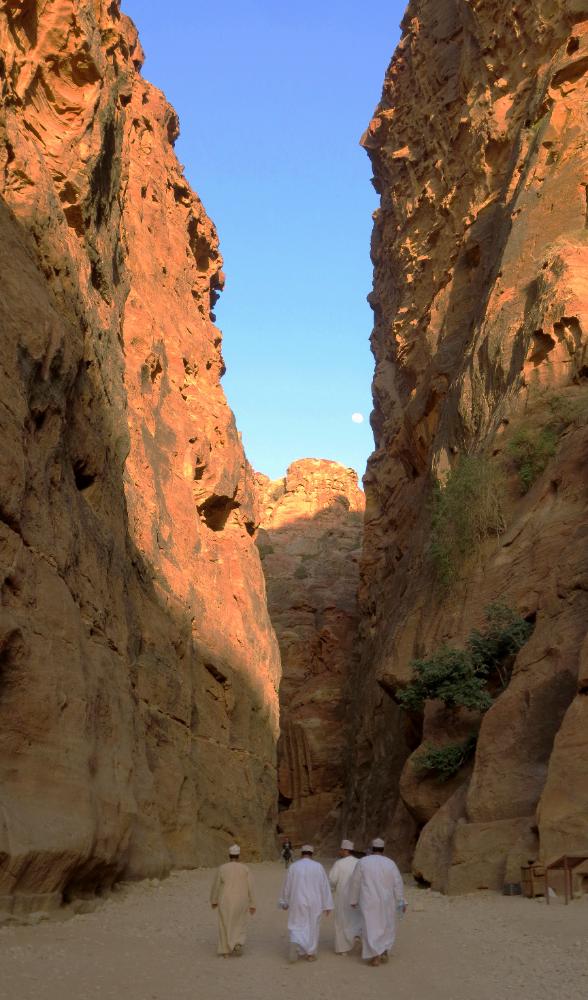
| Misk Hotel helped us arrange taxi rides both from the Amman airport and to Petra. Our taxi driver, Firas, was a hospitable fellow. "I hope you'll consider Jordan your second home," he told us. |
| Getting to Petra takes a little effort. We arrived in Amman, Jordan and stayed our first night at the modern Misk Hotel. Next morning we took a 3-hour taxi ride south to Petra. The Petra Moon Hotel, located just a short walk away from the entrance to Petra, was our home for the next two nights. |
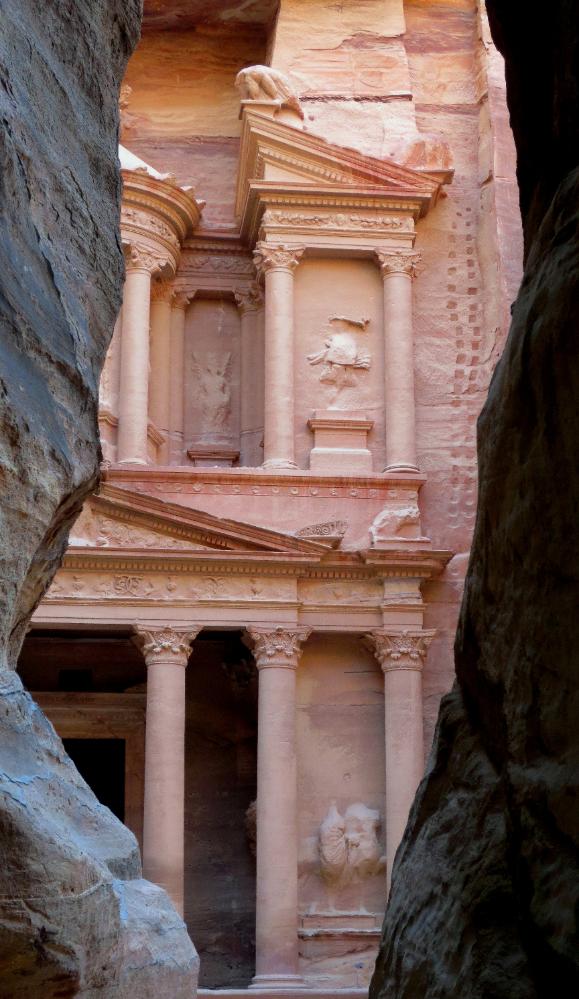
| At the bottom of the Siq, you get your first tantalizing glimpse of the Treasury through the narrow canyon walls |
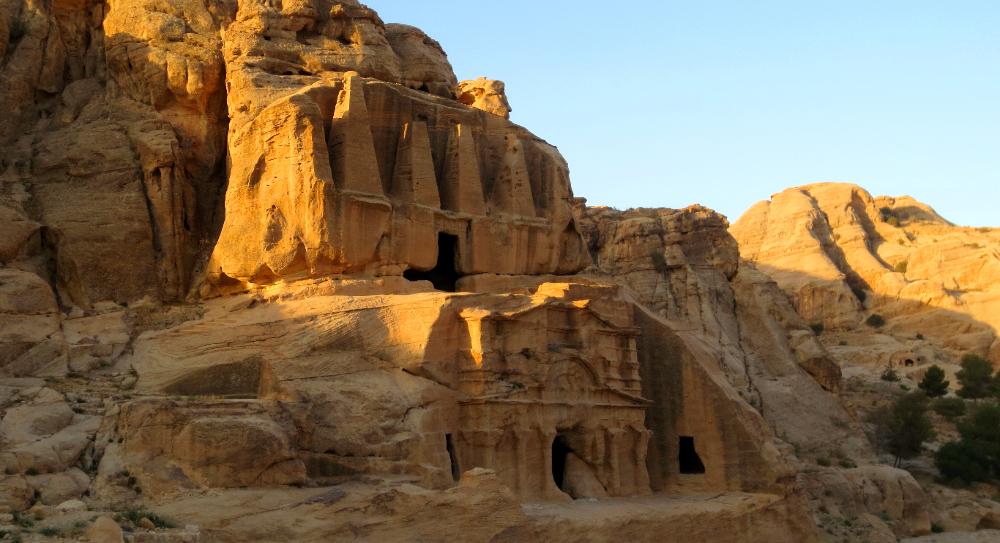
| The Obelisk Tomb (top) and Triclinium (bottom) are the first major sights you'll see in the Bab Al-Siq. This is the view in the early morning. |

| The winding Siq is quite possibly the most interesting approach to any ancient city in the world |
